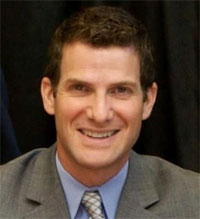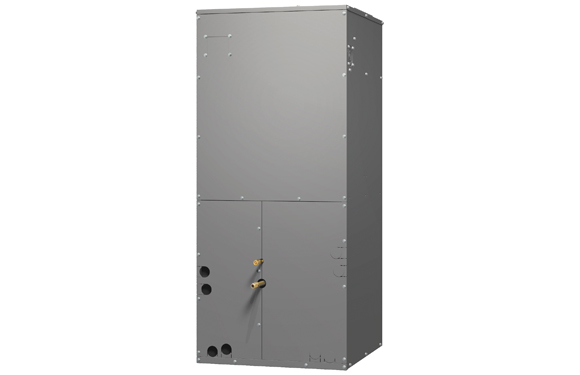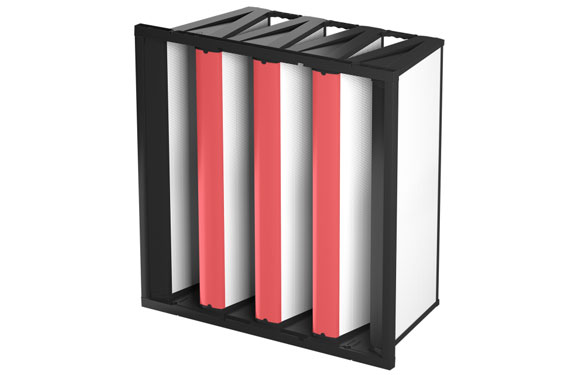
Products
Wireless Gas Detection Enhances Safety, Eases Installation and Maintenance
By Del Williams
For contractors, building owners, and real estate management firms looking to enhance safety while easing installation and maintenance in a wide range of new and retrofit facilities, advanced wireless gas detection systems are increasingly the “go to solution” for monitoring toxic gases in associated parking structures and shipping/loading bays.
In these types of projects, dangerous gas exposure typically comes from carbon monoxide and nitrogen dioxide from vehicle exhaust in the parking garages.
Although wired installations have long been utilized to install gas monitoring networks in these structures, new advanced wireless systems are proving increasingly effective, particularly for retrofits or expansions of existing systems.
Enhance Safety

“With advanced wireless gas detection systems capable of communicating through Wi-Fi, Bluetooth, etc., users can observe current conditions via their PCs, tablets, phones or any smart device with real-time alarms in case of emergency,” says Robert Presser, Vice-President of Acme Engineering. Acme is an ISO 9001:2015 certified manufacturer of environmental controls and systems with integrated mechanical, electrical and electronic capabilities. The company has expertise providing equipment for monitoring a variety of gases such as carbon monoxide, nitrogen dioxide, carbon dioxide, hydrogen, ammonia, and refrigerants. Acme has successfully installed wireless systems for the last seven years.
According to Presser, the easy installation of wireless gas detection devices can often result in wider, more complete coverage of large enclosed, semi-enclosed, or remote parking structure areas than traditional wired systems, which may be less feasible.
In addition, he states that the flexibility of wireless sensor placement can also improve safety by enabling positioning where it is most needed, unencumbered by the limitations of routing electrical lines or conduit.
Simplify Installation, Reduce Cost and Maintenance
While wireless gas detection systems can significantly ease installation in new facilities, in some older structures requiring retrofits this approach can sometimes be almost the only feasible solution.
“In older facilities, everything HVAC was a standalone 120-volt unit, which required inter-wiring relays to start the fan,” says Presser. “You had line voltage coming in, you had control line voltage going out to a relay board where you were doing your fan logic. There was no software; it was all hard-wired. In really old facilities, you might even find a pneumatic sampling system gas detection device, which was literally as big as a refrigerator.”
Traditionally, obstructions such as steel beams and concrete walls also make it difficult to run wiring. A truly reliable wireless system can make it unnecessary to drill through a wall or penetrate a steel beam to run wire and conduit. This approach can eliminate much of the electrical costs, including the costly labor of licensed electricians, while expediting the project.
“In older facilities, it can be very difficult trying to reuse a very old wiring system not designed for the task. Instead, it is much simpler to put in an advanced wireless system. With wireless gas detection networks, all that is required is mounting the sensors and establishing the connection with the system. Wireless systems can even eliminate the need for a control panel,” says Presser.
Acme has developed a wireless version of its Multi-Gas Monitoring System (MGMS) system that incorporates Wi-Fi capability, so it isn’t necessary to have a control panel as the sole point to receive feedback from the gas detection network.
Wireless gas detection systems also reduce maintenance by eliminating cable troubleshooting, as well as lightning and storm-related damage to the main controller from surges carried by the cables.
In addition, when retrofits or expansions of an existing system are necessary, additional wireless detectors can be simply added without sorting through complicated system configurations.
According to Presser, advancing sensor technology has also led to the development of greater system reliability while minimizing false positives and excessive maintenance. In fact, instead of yearly calibration, in state-of-the-art wireless systems, sensors can function for over three years without recalibration.
While contractors and facility management professionals are more familiar with traditional wired gas detection systems, the addition of sophisticated wireless systems to parking garages provides some important new capabilities.
Whether for new or retrofit commercial, residential, or multi-use structures, the flexibility and ease of installation that today’s newest wireless options provide go a long way towards boosting safety and speeding project completion.
For more info, visit Acme Engineering Prod. Inc. at acmeprod.com or in the U.S. phone Michael McKee, National Sales Manager at: 514-718-4868; fax: 518-236-6941; mail Acme at Trimex Building, Route 11, POB 460 PMB 10, Mooers, New York. In Canada phone: 514-984-4603; fax: 514-342-3131; mail them at 5706 Royalmount Ave., Montreal, Quebec, H4P 1K5.
About the Author
Del Williams is a technical writer based in Torrance, California.














